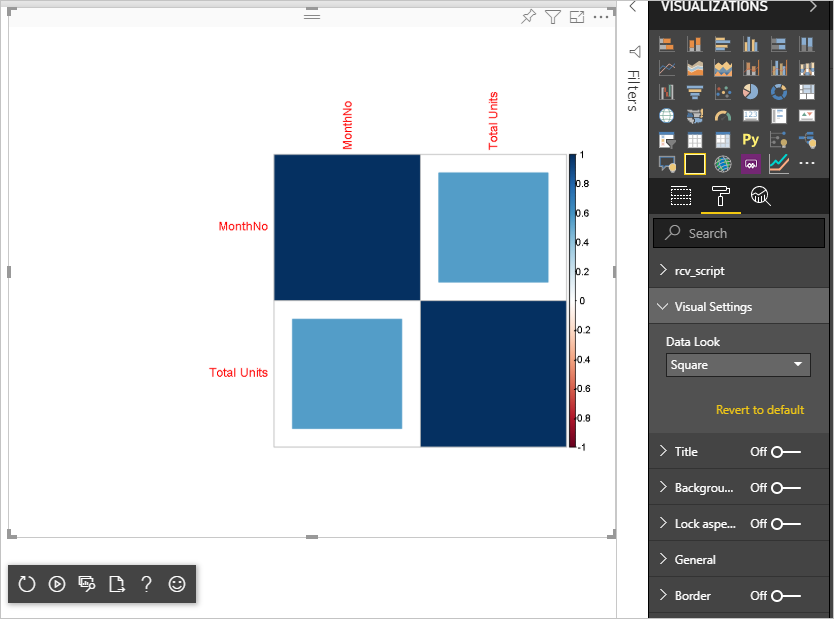教程:创建 R 驱动的 Power BI 视觉对象
作为开发人员,你可以创建自己的 Power BI 视觉对象。 这些视觉对象可供你、你的组织或第三方使用。
本文将分步指导如何创建 R 驱动的 Power BI 视觉对象。
在本教程中,了解如何:
- 创建 R 驱动的视觉对象
- 在 Power BI Desktop 中编辑 R 脚本
- 向视觉对象的依赖项文件添加库
- 添加静态属性
先决条件
- Power BI Pro 帐户。 开始之前,请注册免费试用版。
- R 引擎。 可以从很多位置(包括 Microsoft Open 下载页和 CRAN 存储库)免费下载 R 引擎。 有关详细信息,请参阅使用 R 创建 Power BI 视觉对象。
- Power BI Desktop。
- 对于 Windows 用户,需要 Windows PowerShell 版本 4 或更高版本,而对于 OSX 用户,则需要终端。
入门
准备视觉对象的一些示例数据。 可以将这些值保存到 Excel 数据库或 .csv 文件中,然后将其导入到 Power BI Desktop 中。
MonthNo 总单位数 1 2303 2 2319 3 1732 4 1615 5 1427 6 2253 7 1147 8 1515 9 2516 10 3131 11 3170 12 2762 若要创建视觉对象,请打开 PowerShell 或终端,并运行以下命令 :
pbiviz new rVisualSample -t rvisual此命令为 rVisualSample 视觉对象创建一个新文件夹。 结构基于
rvisual模板。 它将在视觉对象的根文件夹中创建一个名为 script.r 的文件。 此文件将保管 R 脚本,该脚本运行后可在呈现视觉对象时生成图像。 可以在 Power BI Desktop 中创建 R 脚本。从新创建的
rVisualSample目录运行以下命令:pbiviz start在 Power BI Desktop 中,选择“R 脚本视觉对象” :
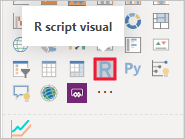
通过将“月份”和“单位总数”拖动到视觉对象的“值”中,将数据分配到开发人员的视觉对象中 。
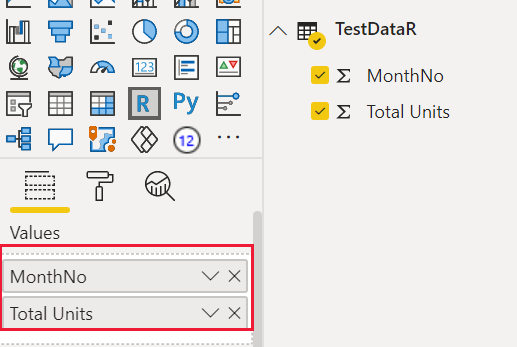
将“单位总数”的聚合类型设置为“不汇总”。
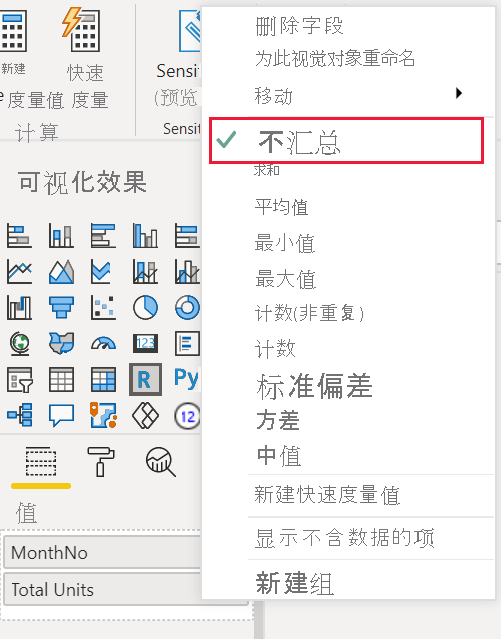
在 Power BI Desktop 中的 R 脚本编辑器中,键入以下内容:
plot(dataset)此命令使用语义模型中的值作为输入来创建散点图。
选择“运行脚本”图标以查看结果。
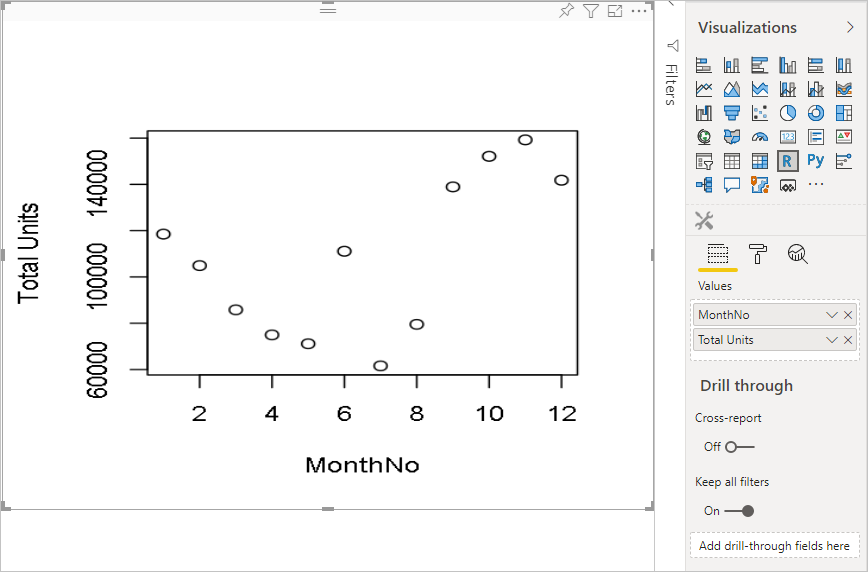
编辑 R 脚本
可以修改 R 脚本来创建其他类型的视觉对象。 接下来创建一个折线图。
将以下 R 代码粘贴到 R 脚本编辑器中。
x <- dataset[,1] # get the first column from semantic model y <- dataset[,2] # get the second column from semantic model columnNames = colnames(dataset) # get column names plot(x, y, type="n", xlab=columnNames[1], ylab=columnNames[2]) # draw empty plot with axis and labels only lines(x, y, col="green") # draw line plot选择“运行脚本”图标以查看结果。
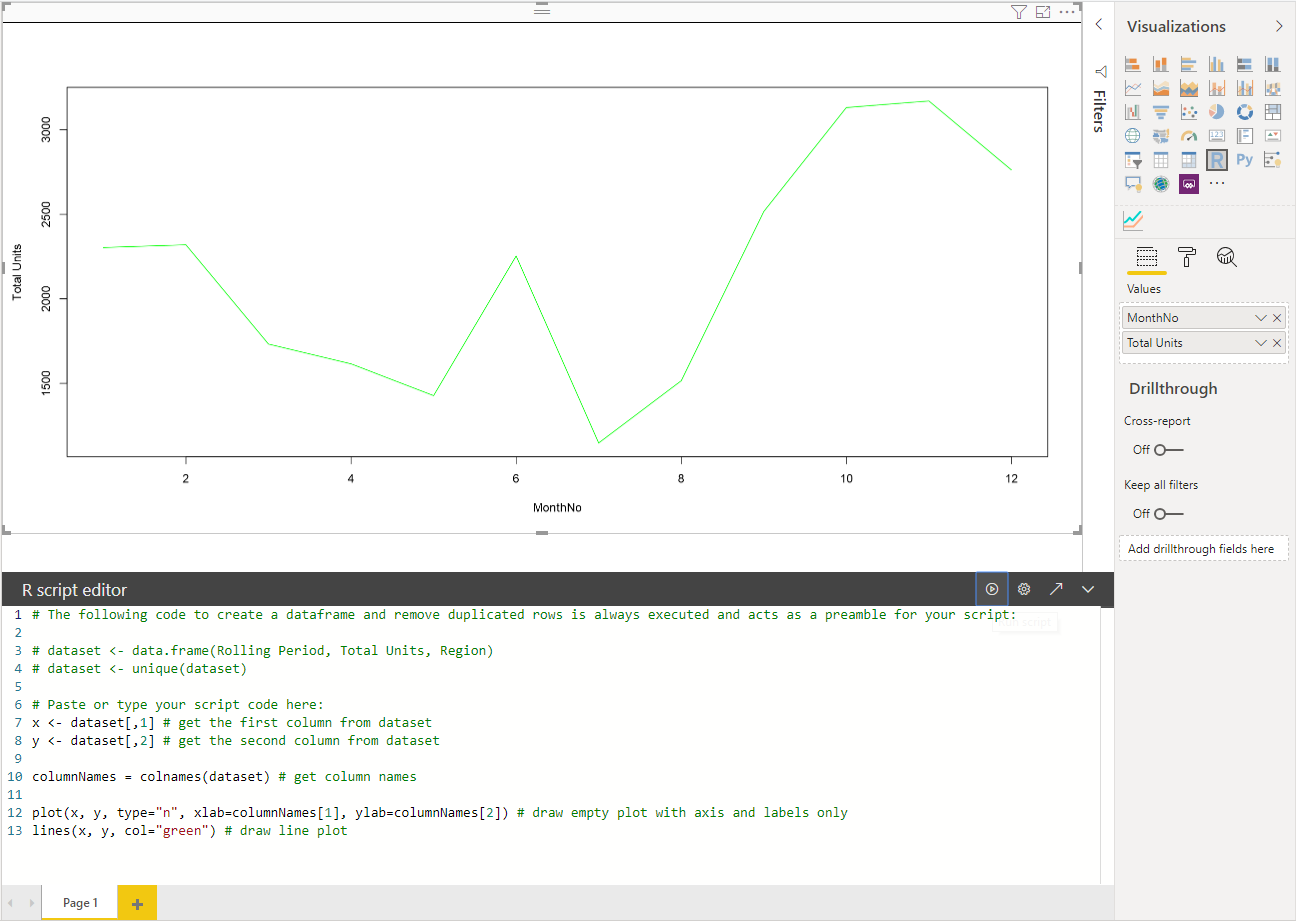
R 脚本准备就绪后,将其复制到视觉对象项目的根目录中的
script.r文件中。在 capabilities.json 文件中,将
dataRoles:name更改为 dataset,将dataViewMappings输入设置为 dataset 。{ "dataRoles": [ { "displayName": "Values", "kind": "GroupingOrMeasure", "name": "dataset" } ], "dataViewMappings": [ { "scriptResult": { "dataInput": { "table": { "rows": { "select": [ { "for": { "in": "dataset" } } ], "dataReductionAlgorithm": { "top": {} } } } }, ... } } ], }添加以下代码,以支持从 src/visual. ts 文件中调整此映像大小。
public onResizing(finalViewport: IViewport): void { this.imageDiv.style.height = finalViewport.height + "px"; this.imageDiv.style.width = finalViewport.width + "px"; this.imageElement.style.height = finalViewport.height + "px"; this.imageElement.style.width = finalViewport.width + "px"; }
向视觉对象包添加库
corrplot 包创建相关矩阵的图形显示。 有关 corrplot 的详细信息,请参阅 corrplot 包简介。
将
corrplot库依赖项添加到dependencies.json文件。 下面是文件内容示例:{ "cranPackages": [ { "name": "corrplot", "displayName": "corrplot", "url": "https://cran.r-project.org/web/packages/corrplot/" } ] }现在可以开始在
script.r文件中使用 corrplot 包。library(corrplot) corr <- cor(dataset) corrplot(corr, method="circle", order = "hclust")使用
corrplot包的结果如下例所示: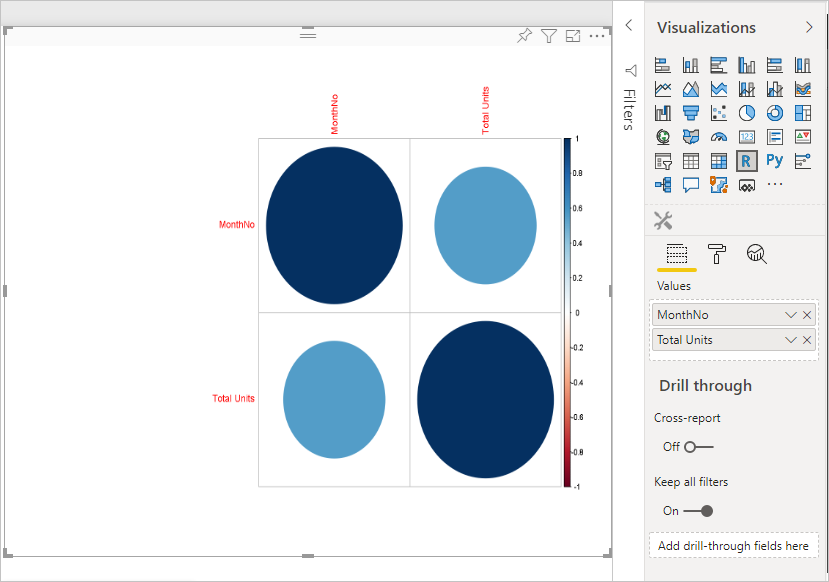
将静态属性添加到“属性”窗格
现在已有一个基本的 corrplot 视觉对象,接下来将属性添加到“属性”窗格,让用户能够更改对视觉对象的观感。
我们将使用 method 参数来配置数据点的形状。 默认脚本使用圆圈。 修改视觉对象,允许用户在多个选项之间进行选择。
在 capabilities.json 文件中定义名为 settings 的
object,并向其赋予以下属性。"settings": { "properties": { "method": { "type": { "enumeration": [ { "value": "circle" }, { "value": "square" }, { "value": "ellipse" }, { "value": "number" }, { "value": "shade" }, { "value": "color" }, { "value": "pie" } ] } } } }打开 src/settings.ts 文件。 使用公共属性
method、name、displayName和slices创建一个VisualCardSettings类,代码框中所示。import ItemDropdown = formattingSettings.ItemDropdown; const methodOptions = [ { displayName: "Circle", value: "circle" }, { displayName: "Square", value: "square" }, { displayName: "Ellipse", value: "ellipse" }, { displayName: "Number", value: "number" }, { displayName: "Shade", value: "shade" }, { displayName: "Color", value: "color" }, { displayName: "Pie", value: "pie" } ] class VisualCardSettings extends FormattingSettingsCard { method: FormattingSettingsSlice = new ItemDropdown({ name: "method", displayName: "Method", items: methodOptions, value: methodOptions[0] }); name: string = "settings"; displayName: string = "Settings"; slices: Array<FormattingSettingsSlice> = [this.method]; }完成这些步骤后,可以更改视觉对象的属性。
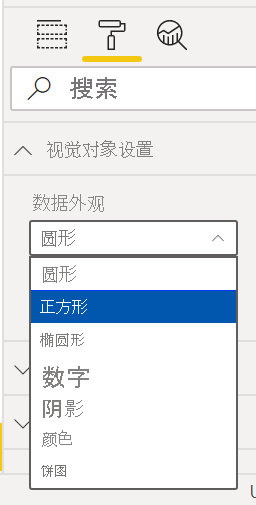
最后,R 脚本必须具有默认属性。 如果用户不更改属性值(在本例中为形状设置),视觉对象将使用此值。
对于属性的 R 运行时变量,命名约定为
<objectname>_<propertyname>,在本例中为settings_method。运行以下 R 脚本:
library(corrplot) corr <- cor(dataset) if (!exists("settings_method")) { settings_method = "circle"; } corrplot(corr, method=settings_method, order = "hclust")
打包并导入视觉对象
现在可以打包视觉对象,将其导入到任何 Power BI 报表。
填写
pbivis.json文件中的displayName、supportUrl、description、作者的name和email以及任何其他重要信息。如果要更改可视化效果窗格上的视觉对象图标,请替换 assets 文件夹中的 icon.png 文件 。
从视觉对象的根目录,运行以下命令:
pbiviz package有关打包视觉对象的详细信息,请参阅打包自定义视觉对象
将视觉对象的 pbiviz 文件导入任何 Power BI 报表。 有关如何执行此操作的说明,请参阅将视觉对象文件从本地计算机导入 Power BI。
最终的视觉对象如以下示例所示:
